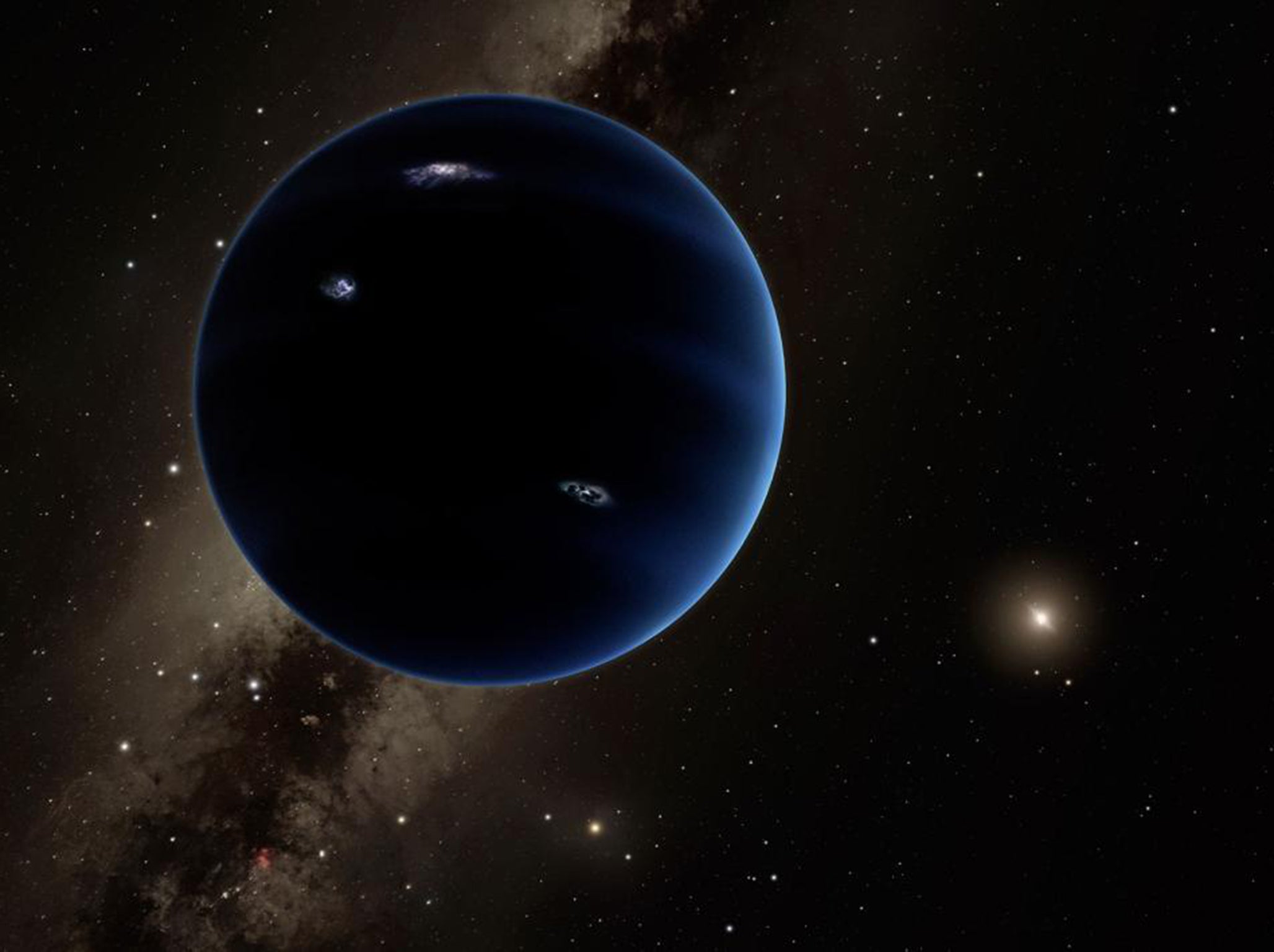Planet 9: Astronomer Mike Brown's daughter told him to find new planet after he 'killed off Pluto'
'She said ‘Daddy, what you need to do is go find a new planet so that people will no longer be sad about Pluto’'

Early on 20 January, Mike Brown put on his special “planet socks” decorated with famous members of the Solar System and went to work. Later that night the astronomer came home to his front door with a celebratory message pinned on it from his ten-year-old daughter Lilah: “Congratulations Daddy! The 9th Planet, AKA The Lilah Planet.”
Dr Brown, an astronomer at the California Institute of Technology (Caltech), is now famous as the co-discoverer with his Russian-born colleague Konstantin Batygin of the most convincing evidence so far for a mystery planet on the icy fringes of the Solar System, which they have tentatively called “Planet Nine”, despite Lilah’s lobbying.
Before 20 January, Dr Brown was better known as the man who had killed off Pluto by showing that it just wasn’t big enough to be a true planet. “Pluto killer” may sound a big extreme, but Brown appears to revel in the controversy the tag created – his own Twitter handle is @plutokiller and his 2010 book is called How I killed Pluto and Why It Had It Coming.
Perhaps not surprisingly given the number of enthusiastic schoolchildren who were brought up believing in a nine-planet solar system, Brown became something of a hate figure. He says he still gets angry letters and late-night obscene calls from people who can’t get over the loss of their beloved Pluto, which was officially downgraded to “dwarf planet” status ten years ago.
So his co-discovery of evidence supporting the case for a new ninth planet may go some way towards redeeming him in the eyes of those who, until 20 January, tended to view him as some sort of cosmic kill-joy who murdered the smallest, cutest member of the famous gang-of-nine.
“I hope so. My daughter is the one who told me I need to do this. Even before we started this, she said ‘Daddy, what you need to do is go find a new planet so that people will no longer be sad about Pluto’,” Dr Brown said.
It was Brown’s earlier discovery in 2005 of an object that officially became known as Eris that ended Pluto’s planet career. Eris, which briefly went under the name of Xena, turned out to be as big if not bigger than Pluto, calling into question whether either of them were a true planet.
The kerfuffle got worse in 2006 when the International Astronomical Union “clarified” the scientific definition of a planet: it must be in orbit around the Sun, have a big enough mass to assume a nearly round shape and, most importantly but confusingly, “clear the neighbourhood” around its orbit.
It was this last precondition that did for Pluto and Eris. They just weren’t massive enough to exert a gravitational influence that could clear their orbits of smaller, rocky debris – hence their status as dwarf planets.
Dr Brown became the notorious “Pluto killer” by justifying the demotion of Pluto. There are, he insisted in 2006, only eight true planets in the Solar System, and the last one to be discovered was Neptune in 1845.
But now he admits he was wrong. The evidence he has gathered with his colleague Konstantin Batygin clearly indicates that there is indeed a mysterious ninth planet orbiting so far from that Sun that it takes between 10,000 and 20,000 years to complete one revolution.
A key part of the evidence is that Planet Nine seems to fulfil the third criterion for a true planet. The two astronomers have found that it exerts an influence on several objects in the Kuiper Belt beyond Nepture, the furthest known planet from the Sun.
“Is Planet 9 gravitationally dominant? I think it is safe to say that any planet whose existence is inferred by its gravitational effects on a huge area of the Solar System is gravitationally dominant,” Dr Brown said.
“In short, no matter where it is, the one thing we know for sure about Planet Nine is that it is dominating the outer edge of the Solar System,” Dr Brown said.
“That is enough to make it a planet by anyone’s calculation.”
Join our commenting forum
Join thought-provoking conversations, follow other Independent readers and see their replies
Comments